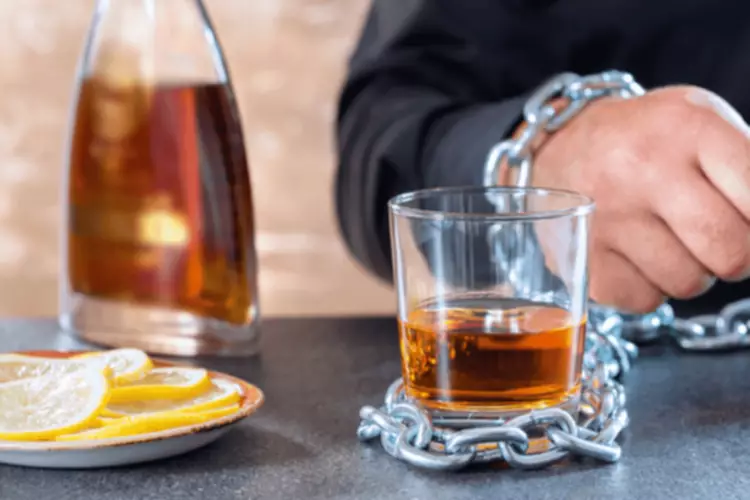How Does Alcohol Affect Your Driving? Dangers & Consequences
Content
Limiting yourself to only one or two drinks an hour can help keep you from getting too far over 80 at any point during the event. The length of the planning horizon should capture such factors as planning ability or more generally ability to control one’s behaviors (Ameriks, Caplin, & Leahy, 2003). https://ecosoberhouse.com/ People who do not plan may be less likely to arrange for alternate drivers and not be able to anticipate situations in which they may be tempted to drink heavily. We selected questions on the propensity to plan from a previous survey of smokers conducted for research by one of the authors.
- All these penalties can be enhanced if the DUI is aggravated or otherwise elevated to felony status.
- Most drivers in alcohol-related fatal crashes are male (73 percent) (NHTSA 2003a,e).
- The strong relationship between alcohol addiction and driving under the influence implies important roles for treatment and mechanisms to restrain addicted individuals from DUI, such as ignition interlock devices.
- Misdemeanor offenses tend to carry moderate fines ($1,000 or so) and minimal, if any, jail time (almost always less than one year).
- The length of the planning horizon should capture such factors as planning ability or more generally ability to control one’s behaviors (Ameriks, Caplin, & Leahy, 2003).
Overall, the proportion of drivers with positive BACs decreased from 36 percent in 1973 to 17 percent in 1996. The decline was greatest for drivers with lower BACs (0.005 to 0.049 percent). Within a few seconds after ingestion, alcohol reaches the liver, which begins to break it down, or metabolize it.
Frequently Asked Questions
Over the past two decades, fatal crashes not involving alcohol increased in each age group, indicating that the overall decline in alcohol-related deaths during this period was independent of changes in the age composition of the U.S. population. When asked whether they believed their BAC at the time of their most recent drinking–driving trip was above or consequences of drinking and driving below the legal limit, about 10 percent of all age drivers believed they were above the legal limit. Forty-four percent of drivers ages 16 to 20 believed they were above the legal limit. This suggests that more than half (56 percent) of the 16- to 20-year-old drinking drivers questioned were not aware that driving after any drinking is illegal for them.
Specifically, the present investigation points to further division between Americans who drive following heavy drinking episodes and the aggregates who refrain from drinking and driving at all. Several non-mutually-exclusive explanations exist for why individuals are heavy and binge drinkers in general and drive under the influence in particular. Alcohol consumption is an integral part of their social experiences, and DUI occurs while or after socializing (Beck, Ahmed, & Farkas, 2011). Some individuals who engage in their behaviors are present-oriented, meaning they discount the future heavily, and/or experience difficulty in executing their plans.
Frequently Asked Questions (FAQs)
Drivers ages 16 to 20 who drove after drinking reported on average the fewest drinking–driving trips of any age group (Royal 2000). If you are convicted of driving under the influence, part of your sentence will include paying a fine. All states have laws setting minimum and maximum fines for drunk driving, but those penalties can be enhanced by other circumstances. For some drivers, it feels humiliating to have to appear in public to answer charges of driving drunk.

A pint of beer, for example, is roughly equal to one glass of wine, which is itself roughly equal to one shot of liquor. Of course, particularly strong drinks have a higher alcohol content than others. Modern bottlers tend to list the alcohol by volume, or ABV, content on the label so you know roughly how much alcohol you are imbibing. While most beers might have an ABV in the 5-6% range, for example, you should consider a beer with an 11% ABV to be the equivalent of two glasses if you are trying to determine how many drinks you can have before going over the 80 mg limit. Your life and the lives of others on the road are at risk every time a driver gets behind the wheel after drinking.
The real consequences of drunk driving
The FARS does not routinely record the race and ethnicity of people who die in motor vehicle crashes. However, from 1990 to 1994 a special initiative linked nearly 200,000 records from FARS with death certificate information on race and ethnicity from the National Bureau of Health Statistics (Voas and Tippetts 1999). Information was available only for people who died in crashes, not drivers who survived fatal crashes.
- Treatment for people with AUD who are convicted of alcohol-impaired driving is most effective when combined with other strategies (such as ignition interlocks) and when offenders are closely monitored.
- If you cannot make bail, you may find yourself incarcerated until your hearing.
- If you were publicly intoxicated but not attempting to drive, you might get held overnight for your safety or, if you were loud and troublesome, charged with disturbing the peace.
This study raises the possibility that delaying underage drinking may reduce alcohol-related crash involvement among adults as well (Hingson et al. 2002). In an analysis of the effects of increasing the MLDA to 21, O’Malley and Wagenaar (1991) found that people who grew up in States with the legal drinking age of 21 not only drank less when they were younger than 21, they also drank less from ages 21 to 25. In 2002, the number of male alcohol-related traffic deaths was 13,500, a 34-percent decline. However, there have been greater proportional declines in the numbers of male drivers in alcohol-related fatal crashes.